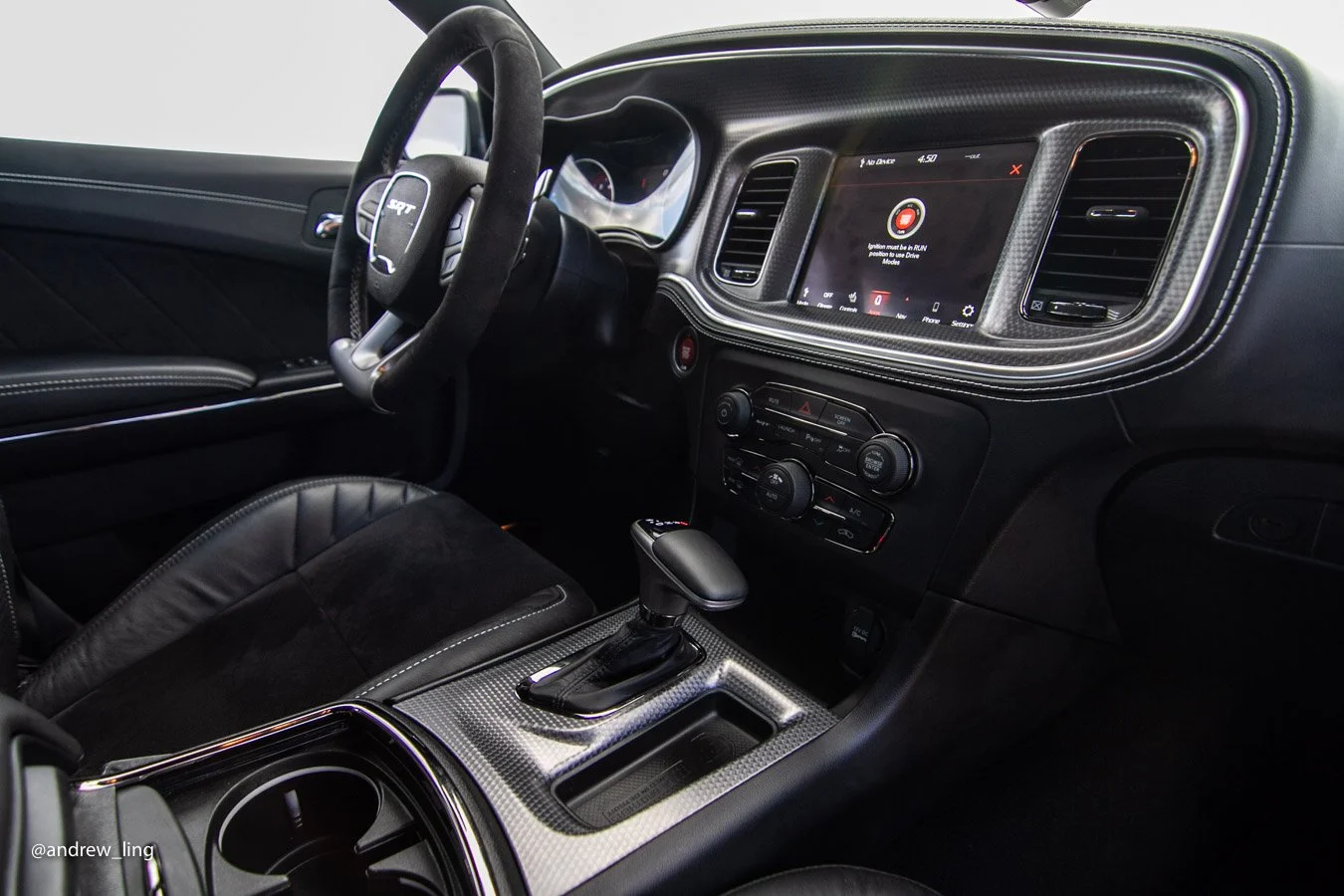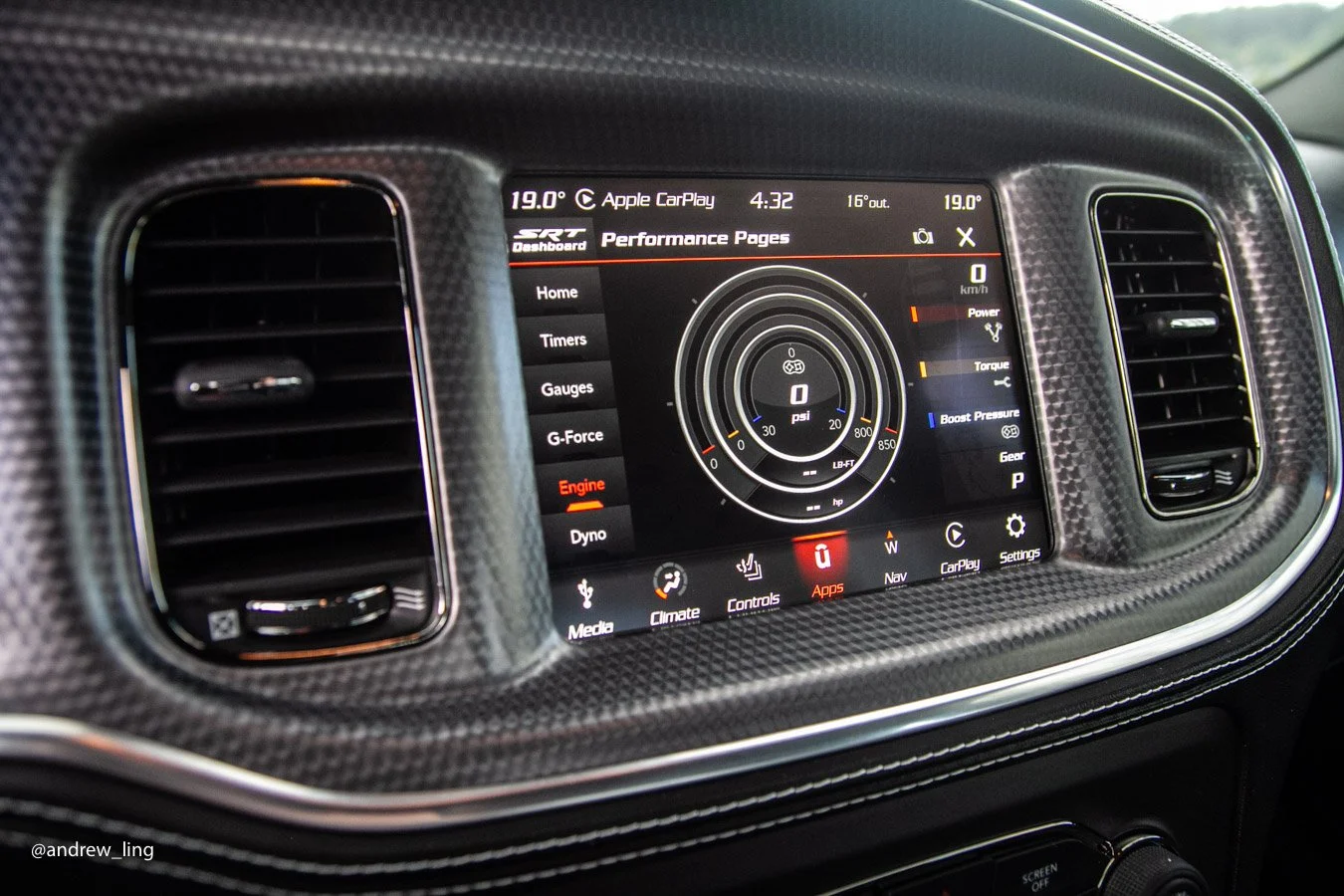2022 Dodge Charger SRT Hellcat Redeye
The days of the old-school large rear-wheel-drive American sedans are largely over. Ford basically doesn’t sell sedans any longer in North America, Chevrolet bowed out of that market years ago, and Dodge? Well Dodge is the last man standing with the Dodge Charger.
Loved by the police force in Vancouver, which has an entire fleet of them, the Dodge Chargers look mean, brash, bold, and very much in keeping with the Dodge design language. So bold was the design that there was a small pocket of Vancouverites that complained that the Charger police cars looked much less approachable than the VPD’s Ford Crown Victoria’s that they replaced.
Based on an old platform inherited from Mercedes-Benz from the DaimlerChrysler days, the Charger has become a fully developed large car.
The boldest and most brash of the line-up has got to be the subject of this review, the 2022 Dodge Charger SRT Hellcat Redeye widebody.
What’s in a name?
The “Charger” name has been around since 1966, a throwback from the muscle car era. At that time, Dodge was trying to create a larger pony car and the Charger was the result of their effort.
In order to make it stand out, the company wanted to create a more expensive and luxurious car that had more space for four, unlike the Ford Mustang which had compromised rear seating. Available only as a two-door fastback, the very first-generation Dodge Charger was also available with an optional 426 cubic inch Hemi V8. And thus, the union between the Charger name and the Hemi engine was born.
Anyone who watched television back in the 1980’s will tell you that America’s most favourite car is the Dodge Charger, thanks to the likes of the cult series “The Dukes of Hazzard”.
Fast forward to 2022 and the seventh generation Dodge Charger is still alive and kicking well over half a decade later (albeit there was 20 year hiatus). Now only available as a four door sedan, my test vehicle is the top dog model, created by Dodge’s former “Street & Racing Technology” high-performance automobile group within Stellantis North America.
This same group began in 1989 and was responsible for developing the first Dodge Viper, therefore the pedigree is unquestionable.
Although all of the core elements of the SRT performance engineering team have now been integrated into Stellantis’ global engineering organization, the Charger SRT Hellcat Redeye is a fitting tribute as one of the team’s last projects.
To differentiate the Charger SRT Hellcat Redeye further from the standard car, Dodge has tweaked virtually every panel on the car and added functional hood vents and unique front and rear bumpers.
Styling cues taken from other models include a black matte texture roof and hood, a cold air intake that echoes that of the original Viper coupe, as well as creases in the fenders and doors that imitate the look of the 1960’s Charger. The aerodynamics of the Hellcat have been revised slightly, too, with new additions including a rear spoiler and an integrated front splitter.
In order to truly spot the Redeye though, you’ll have to look for the bedazzled jewel in the eye of the Hellcat logo on the front fenders, as well as the larger hood scoop and relocated vents flanking the scoop.
What’s under the hood?
The Charger Hellcat Redeye’s claim to fame is its supercharged Hemi V8 engine. It’s almost comical that Dodge has normalized a 700+ horsepower car, making it less of a rare occurrence than it once was.
The “Hellcat” name pays homage to the muscle cars of old, with 717 horsepower from a 6.2-litre Supercharged Hemi V8. Step up to the Redeye model and you’ll be rewarded with an extra dose of ‘hang onto your hats”, thanks to a nuclear 797 horses powerplant and a claimed 203 mph top speed.
The Redeye’s extra 90 extra horses is courtesy of a larger 2.7-litre screw-type supercharger with 14.5 psi of boost compared to the regular Hellcat’s 2.4-litre supercharger with 11.6 psi of boost. The Hellcat Redeye’s red line is also higher at 6,500 rpms compared to 6,200 rpms. As you can imagine, all of this displacement is only useful if combustion can happen. To ensure the engine is fed properly, the Redeye has two fuel pumps instead of just one.
Other internal changes include stronger forged aluminium pistons, connecting rods, valvetrain and increased oil flow components. Even the driveshaft is 15 per cent beefier and the axles 20 per cent stronger on the Hellcat Redeye compared to the regular Hellcat.
If we want to get really technical, the engine features a forged steel crankshaft with induction-hardened bearing surfaces and a specially tuned crank damper that has been tested to 13,000 rpms.
To harness all of this power, Dodge fits all Charger Hellcats with the standard widebody kit which includes wider, stickier tires and stiffer chassis components. New fender flares add 3.3 inches of width to the Charger and accommodate 11.0-inch wide, 20-inch diameter wheels wrapped in Pirelli tires sized 305/35R-20 at all corners.
This additional width truly emphasizes the Charger’s visual menace, and the car looks even more like it’s up to no good.
How does it drive?
With only rear wheel drive and 707 pound-feet of torque, these Redeye leaves no one wanting for more power. This power is sent to the rear wheels via a heavy-duty torque-converter-based quick shifting eight-speed TorqueFlite automatic transmission. Dodge says that it is capable of shifting gears in as quick as 160ms.
This gearbox also has a rev-matching feature, further helping to smoothen out the engine’s delivery.
All of this unreal performance means that drivers much exercise restraint when applying the throttle pedal in order to maintain traction. Even with a rear limited slip differential and traction control, the rear wheels can easily spin in wet weather.
When you are able to hook-up the rear tires properly, 0-100 km/hr runs can be blasted down in around 3.5 seconds, about 3/10ths of a second faster than the regular Charger Hellcat.
Dodge also allows drivers to easily turn down the horsepower output of the Hellcats with just a couple of pushes of the button on the infotainment screen. I was somewhat relieved to drop it from 797 horses to 500 horses during the extremely rainy week that I had the Charger.
Of course, to get access to the full 797 horsepower in the first place, you have to start the Charger using the special performance red key. Using the “regular” black key results in a limit of “only” 500 horsepower via a less powerful fuel map and a 4,000 rpm rev limiter is put in place.
In day-to-day traffic, the Hellcat’s front tires don’t communicate as much to the steering wheel as I’d like and the wide body kit does result in a worse turning circle. Be prepared to do more three-point-turns than you might expect. Still, the ride is surprisingly compliant and the handling is sound. There’s no masking the Charger for the big car that it is though.
A three-mode-driver selectable sports suspension helps to improve performance while balancing comfort. Additionally, the Charger Hellcat Redeye sports the largest brakes ever offered by Dodge, with 15.4-inch floating Brembo discs at the front and six-piston calipers.
What about the inside?
Inside, you’ll find a revamped interior with surprisingly comfortable and plush seats. You sit quite high off the floor and the seats are comfortable over long distances. This ain’t no European sedan, that’s for sure.
Dodge says that higher quality materials have been used throughout, and my test car’s split leather and alcantara seats have been recently redesigned for improved comfort and support. Nonetheless, this is an aging vehicle and cheap materials still linger. At least the dash and door panels have soft-touch surfaces.
An 18-speaker Harmon Kardon audio system is standard, as is an electrically adjustable heated steering wheel, paddle shifters, heated and ventilated front seats, heated rear seats, a Wi-Fi hotspot and automatic climate control.
The UConnect infotainment system works well, but the 7.0 inch screen looks small and is a bit slow when compared to the updated unit in the 2021 Dodge Durango Citadel I reviewed last year.
The “Performance Pages” function allows drivers to customize the car’s responses by tailoring the suspension, shift speeds, traction control modes and engine output, but the system is slow to load requiring several seconds to boot up.
TechDriven's verdict
Part of the Dodge Charger’s successful formula has been its many personalities. Whether it’s a cop car, muscle car, a family-capable sedan, or a muscle car, its success is that it can be any of those things depending on what package and powertrain you choose.
As more of the automotive world shifts towards electrification, the days of this nostalgia-inducing, tire-burning, four-door heathen are numbered. However this is a special car that makes mundane drives to the office silly, fun, and exciting. You giggle everytime you put your foot down and hear that audacious supercharger whine.







































